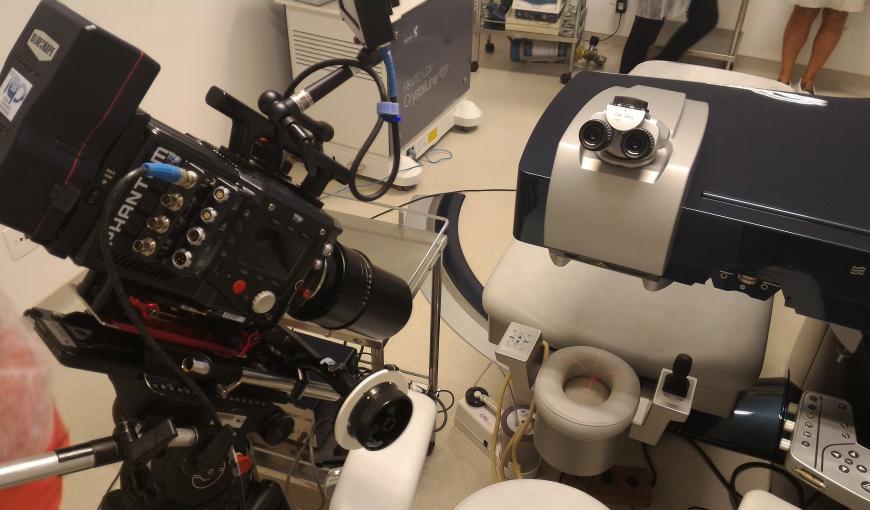First laser surgery captured in 1000 fps at 4K resolution
Teams from the Digital Video Applications Laboratory (LAViD) of the Federal University of Paraíba (Universidade Federal da Paraíba – UFPB), Mackenzie University and the Federal University of São Paulo (Universidade Federal de São Paulo – Unifesp) have displayed images of the first laser eye surgery captured with a camera capable of shooting 1000 frames per second at 4K resolution, an ultra-high resolution standard, during the CineGrid, held at the University of California, San Diego (UCSD). The demonstration allowed the audience to clearly see the laser acting on the cornea of the patient, which cannot be seen with the naked eye.
The video was captured and reproduced uncompressed, at 1000 frames per second (fps), in a transmission rate above 100 Gbps. In addition to that, the images were also shown seamlessly with the Collaboration and Visualization Panel (Sage), a project of the Electronic Visualization Laboratory (EVL) at the University of Chicago, USA. The images of the eye surgery were recorded with a special Phantom camera, capable of producing about one Terabyte (TB) of data every three minutes.
The capture of these images was carried out by teams from the Cinematic Arts Laboratory (LabCine) of Mackenzie University, and the Telessaúde Brasil Redes Laboratory, at Unifesp. From the beginning, the project has been supported by RNP as part of the activities of the Committee for Technological Forecasting in Video Collaboration.
The session was attended by an audience comprising researchers and representatives from research centers and educational institutions from Brazil, the US, Japan and other countries.
Scientific Connection
According to the Unifesp researcher, Cícero Inacio da Silva, the development of this technology will enable residents in ophthalmology, engaged in the field of refractive surgery, to observe the laser acting on the patient, in order to view its effects on the cornea. The ideia is to create the proper conditions so, in the near future, surgeries are broadcasted to several locations, assisting the training of medical residents in ophthalmology.
He said that one of the challenges announced by the Brazilian team during the 2015 CineGrid is to live broadcast a surgery captured at 1000 fps, at 4K, in the next CineGrid, to be held in San Diego in December 2016. The challenge will require approximately 120 Gbps of dedicated connectivity, directly attached to the camera, which does not exist yet between Brazil and the United States, but could be developed soon, so this scientific connection is established in the fields of telemedicine, telehealth, video collaboration and advanced visualization.
Fogo Player
One the technologies that have enabled this successful experience at the CineGrid was the Fogo Player, a software package created by LAViD researchers, which makes possible the projection of videos at 4K resolution, and in 3D (stereoscopy), providing many possibilities of use in sports events, shows and surgical procedures for purposes of continuous education in telemedicine.
Another special feature of the Fogo Player system is to enable the instantaneous communication between those involved in the broadcasted event and the audience, which stresses the importance of its use in distance learning. The project has been developed since 2001, with the support of the RNP.
